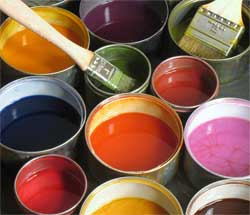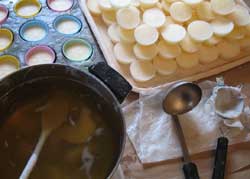Artist • Author • Art Instructor
Enkaustikos—the name means "to burn in." Encaustic painting weaves in and out of art history, gaining prominence for a time, then slipping back into the shadows for centuries. A thousand years after the Greek shipbuilders discovered it, Egyptian painters resurrected the medium, crafting exquisite portraits to decorate the mummy after a patron's death. Fast-forward to the mid-twentieth century. Almost single-handedly, artist Jasper Johns reintroduced encaustic to the art world. Since that time, it has steadily gained acceptance. It's no wonder that we keep revisiting this ancient art form—few others can match its versatility, both in technique and result.

If you don't like the way the work came out, scrape it off and try again! Heat it, let it flow, and it will solidify moments later into a new shape. Encaustic is the very definition of forgiving. Works of encaustic can be sedate and smooth, or seductively dimensional. The wax has an inviting surface that begs to be stamped, gouged, and carved. It invites the viewer not only to look, but to touch and smell.
The slide show above shows several of the layers involved in creating the encaustic painting Seeing Shadows from the Continuum series.
 Like many painters who work in encaustic, Linda makes her own medium and paint, made up of beeswax, resin and pigments. She also uses her own photographs of natural materials to collage between the layers of wax.
Like many painters who work in encaustic, Linda makes her own medium and paint, made up of beeswax, resin and pigments. She also uses her own photographs of natural materials to collage between the layers of wax.
Ready to try it yourself? Check out the workshops page for Linda's studio classes in Portland, Oregon as well as her popular online encaustic courses.